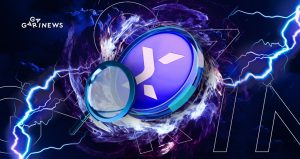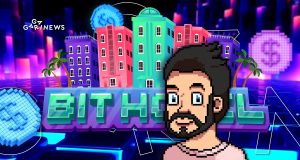What is TRON (TRX)? Project Overview

TRX is a cryptocurrency, based on the TRON blockchain platform, designed both for entertainment content and the development of decentralized applications. Listed among the top 20 virtual assets by market capitalization, TRX is one of the most up-and-coming cryptocurrencies.
Project mission and its launch
The TRON blockchain platform was founded in Singapore during 2017 by a non-profit organization called the TRON Foundation, under the leadership of Chinese entrepreneur Justin Sun. The DeFi Platform was designed as an alternative to centralized online transaction platforms and for direct interaction between entertainment content creators and users.
TRON was launched on the Ethereum blockchain with the cryptocurrency categorized as ERC20 tokens. The ICO TRON (TRX), held from 31 August to 2 September 2017, has been considered one of the most hyped events of the year. The team managed to raise around $70 million in three days, the equivalent of 15,000 BTC at that point. In 2018, the platform “migrated” to its own blockchain.
Altogether 100 billion tokens were made available. Of these, 40 billion were allocated to ICO participants, about 15 billion went to private presales, and the remaining 45 billion flowed to the project itself and its developer. This ratio sparked controversy among market experts and critics, who noted a marked bias in favor of developers.
TRX is the TRON blockchain's primary trading asset. Besides functioning as a method of remuneration for blockchain validation or staking, it is also used to pay transaction fees. The TRON DAO also offers the possibility of locking up tokens to receive TRON Power or vote for super representatives.
TRX is used as a means of payment on various online platforms. In addition to the official TronLink cryptocurrency wallet, many popular TRX(-enabled) wallets (Exodus, Trust Wallet, etc.) are also designed to store those tokens.
The features of the TRON blockchain
Blockchain is based on a multi-layered architecture. It involves:
- A kernel level which provides standalone modules for smart contracts, consensus, account management and TVM (TRON virtual machine);
- The storage level at which the blocks and their status information are kept;
- Application level for building dApps using different programming languages (Java, C++, Python, etc.).
Blocks are generated every three seconds. The maximum network performance reaches 2,000 TPS.
The blockchain utilizes the Delegated Proof-of-Stake (DPoS) consensus algorithm. The network is composed of 27 super representatives. Every six hours, they are selected from a list of new representatives. Creation of a new block or transaction processing process rewards a super-rep with 32 TRX.
Stakingrewards.com estimates that the yield for TRX staking is now 3.6% annually.
Is TRON plagiarism?
Justin Sun, as well as the blockchain platform itself both faced harsh criticism and accusations of plagiarism. In particular, some crypto-industry representatives claimed that the White Paper contained numerous sections copied from official documents by other projects, including Ethereum.
According to Sun, an ambiguous issue had arisen through the fault of the translators: The White Paper was originally created with Chinese as the language of the project, and the translation process had not been able to fully reflect all the special features it contained.
The content on The Coinomist is for informational purposes only and should not be interpreted as financial advice. While we strive to provide accurate and up-to-date information, we do not guarantee the accuracy, completeness, or reliability of any content. Neither we accept liability for any errors or omissions in the information provided or for any financial losses incurred as a result of relying on this information. Actions based on this content are at your own risk. Always do your own research and consult a professional. See our Terms, Privacy Policy, and Disclaimers for more details.

























